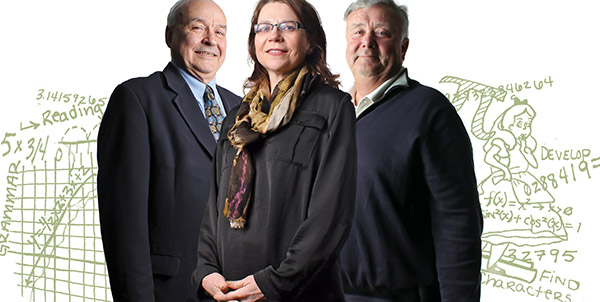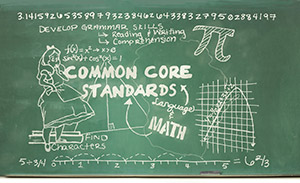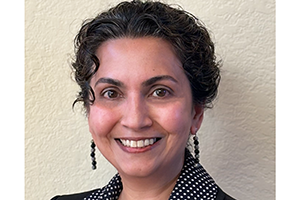
Teachers and students in 45 states are finally going to be on the same page in mathematics and English.
Wisconsin is one of the 45 states to adopt the Common Core State Standards in those subjects. The standards aim to make sure children are learning English and mathematics in the same way no matter where they live. It also means teachers and administrators will have to adjust their teaching methods and ways of assessing student learning.
The School of Education at the University of Wisconsin-Milwaukee is substantially changing the way it educates future teachers as well as working with local schools to help current teachers adapt to the new Common Core State Standards.
Emphases on informational, foundational texts

“We’ve been doing a lot in our courses, talking about the issues surrounding the implementation of the standards. In language arts, for example, there is a distinct shift away from purely literary texts into more informational kinds of texts,” says Tom Scott, an English and language arts lecturer in the School of Education’s Department of Curriculum and Instruction.
Traditionally, he explains, literature texts have included poetry, novels, drama and a strong dose of Shakespeare. The texts to be taught under the new standards include more persuasive and informational material – speeches, essays, rhetoric – with an emphasis on “foundational” documents such as the Declaration of Independence and what is widely known as the Iroquois Constitution. Scott says he sees a similar shift in the teaching of writing.
“This has instructional implications for UWM. Within our classes we are moving to equip our students to deal with both kinds of shifts.”
Math teaching as visual, fundamental, conceptual
Mathematics education is also changing, putting more focus on preparing teachers to help students gain a deeper understanding of mathematical concepts. “In addition to moving the learning of certain concepts and skills to different grade levels, the standards also call for a different approach to teaching,” says Henry Kepner, SOE professor emeritus of mathematics and former president of the National Council of Teachers of Mathematics.
“The new Common Core State Standards are designed to help students gain a deep, fundamental understanding of mathematics,” says DeAnn Huinker, professor of mathematics education who is also involved in preparing new and current teachers. “They will also allow for valid comparisons across states.” The new standards focus more on how mathematics works in everyday life, says Huinker. “This approach really respects the discipline of mathematics and what we know about how students learn.”
Common core standards encourage the use of visual tools like number lines, bar charts and tape diagrams – drawings that look like a segment of tape and are used to illustrate number relationships. The common standards concept borrows ideas on teaching from states and countries – from Asia to Europe – whose students do well in mathematics, says Huinker.
Core promotes improvements, consistency
The Common Core State Standards grew out of a spring 2009 push by the National Governors Association and the Council of Chief State School Officers to assure consistency in mathematics and English language education from state to state, while presumably improving teaching and learning.
In Wisconsin, State Superintendent of Public Instruction Tony Evers announced the formal adoption of Common Core State Standards for English language arts and mathematics in June 2010. Eventually, the state Department of Public Instruction (DPI) plans to consider revisions of curricula in other subjects, such as science and social studies. The statewide implementation of the Common Core State Standards is expected to come in three phases, which began 2010 and will be complete in 2015.
In addition to preparing future teachers, SOE faculty members Kepner, Huinker, Henry Kranendonk and Kevin McLeod, associate professor of mathematics, have been working with the state DPI and education officials on the standards.
The SOE also developed and is leading the Common Core Leadership in Mathematics (CCLM) project, designed to help local schools make the transition to new academic standards. Other partners include the public school systems in Milwaukee, Wauwatosa, Mequon-Thiensville and South Milwaukee.
Like faculty in mathematics education, Scott has been a consultant to school districts in Wisconsin, helping them to align their K-12 curricula with the standards in reading, speaking, listening and writing.






